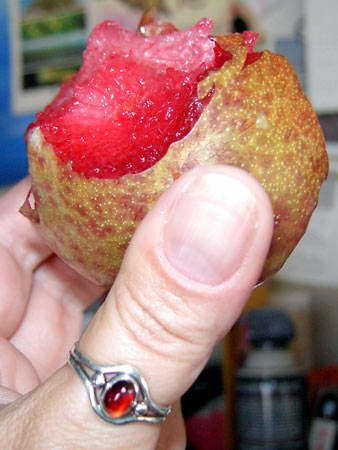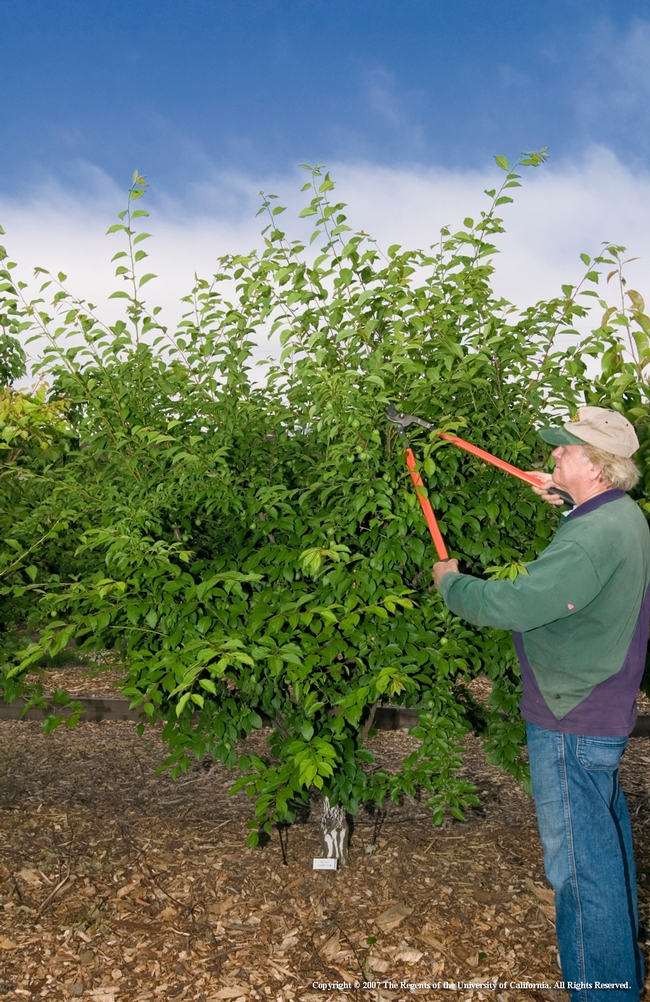In the backyard orchard, pluot reigns supreme
When it comes to planting stone fruit at home, pluots are the way to go, says Chuck Ingels, UC Cooperative Extension advisor in Sacramento County. Cherries are delicious, but with a new maggot pest, are hard to grow. Peaches and nectarines are susceptible to leaf curl disease, which is challenging to manage because the most effective products have been removed from store shelves. Apples and pears can suffer from fire blight and coddling moths worms.
“I think plums and pluots are the best choices for backyard trees,” Ingels said. “Especially pluots.”
“Pluot” is a trade name for varieties of interspecific plum-apricot bred by private Modesto breeder Floyd Zaiger. Pluots’ skin is typically dappled but smooth and without the bitterness in the skin of plums. The flesh is unusually sweet and juicy with complex plum-apricot flavors.
“I really like Flavor Grenade,” Ingels said. “The taste just explodes in your mouth. Another good one is Dapple Dandy, which is a little later.”
Flavor Grenade is a large fruit with oblong shape. The skin has a red blush on green background, and the flesh is a juicy yellow. Dapple Dandy has mottled pale green to yellow, red-spotted skin and red or pink juicy firm flesh.
About a dozen varieties of pluot are offered by Dave Wilson Nursery of Modesto, Zaiger’s exclusive licensee. Dave Wilson Nursery supplies bare root trees in the winter to retail nurseries across California. The best time to plant is early- to mid-winter.
At the UC Cooperative Extension Fair Oaks Horticulture Center in Sacramento, Master Gardeners are creatively planting and pruning pluots and other fruit trees to make them easier to harvest and take less space.
“We have fruit bushes at the horticulture center,” Ingels said. “It works out really well.”
Fruit bushes are standard or semi-dwarf trees kept small by periodic summer pruning. Fruit bushes can be managed without a ladder and multiple species and varieties can be grown in relatively small areas. When bare-root planted in the winter, the trees are headed to knee height. In late spring and again in the summer, new growth is cut in half. This pruning regimen continues until trees reach the desired height - usually two years. For the life of the tree, it is pruned to a size manageable from the ground.
“The main concern is keeping them tame,” Ingels said. “For pluots, there is just one dwarfing rootstock – Citation.”
Pluots, like plums, will also need a pollinizer of a different variety to ensure good fruit set. Most pluot varieties will pollinize another pluot variety. Another option is planting certain varieties of plum to pollinize the pluot.
At the Fair Oaks Horticulture Center, Master Gardeners are experimenting with a number of planting arrangements, such as planting two to four different trees in one hole. Trees grown in this close proximity combine to form a bush the approximate size of one tree grown alone. For more ambitious gardeners, fruit trees can also be carefully trained into an espalier or other design. For examples, see the Fair Oaks Horticulture Center website.
Comments:
What soil, sun, space etc. requirements do plout trees have?
whst sbout Houstons hot climat?
What about freezing?
Where do I buy a plout plant/tree/root?
How long to produce fruit after planting?
What kind of production to expect?
Thanks
Joe S.
- Todd Charske
- Todd charske




Posted by FRATELLI'S on August 30, 2012 at 3:49 AM